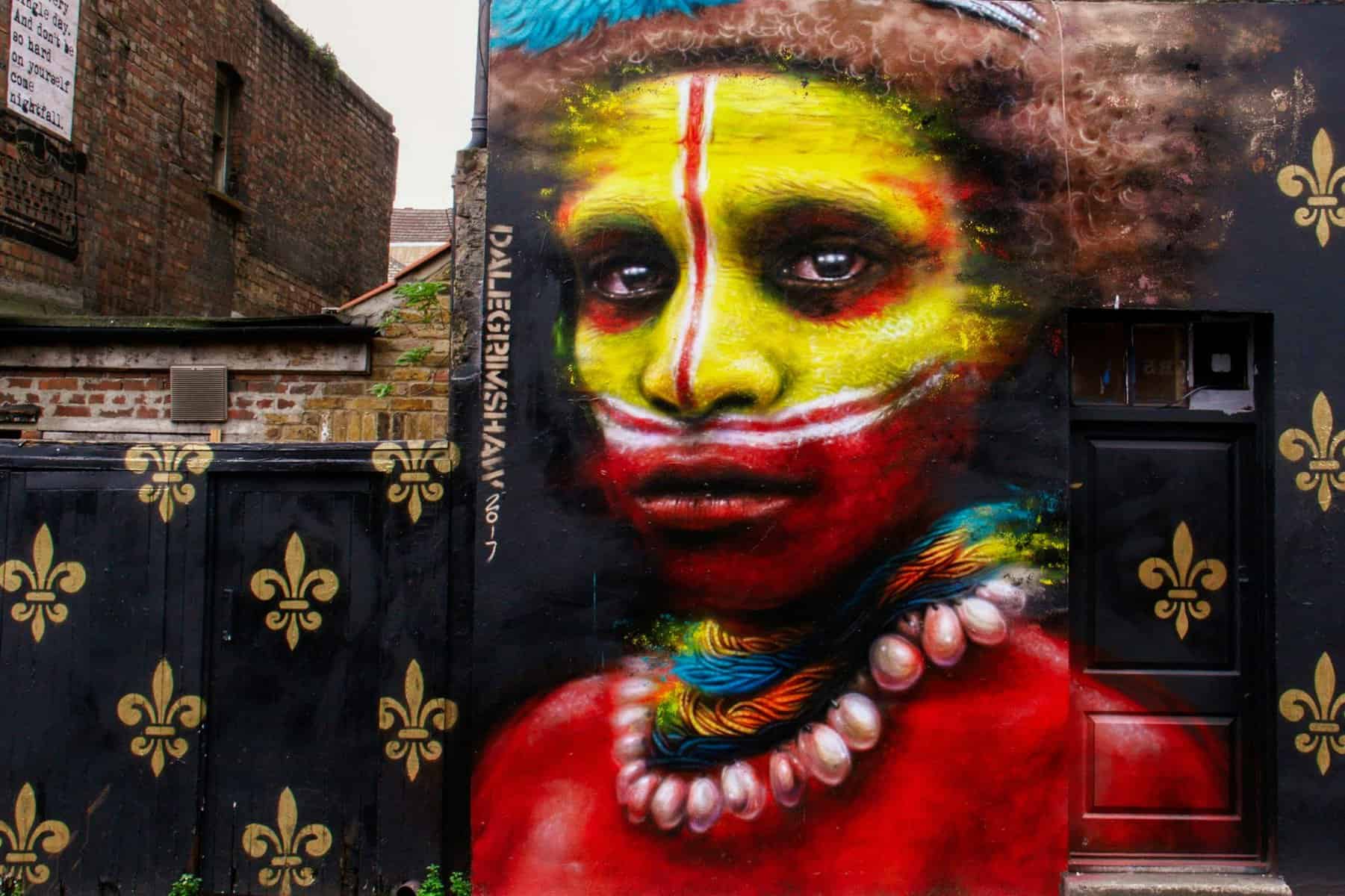
Aboriginal paintings are the art or the depiction of nature by the aboriginal people. They are the native groups of Australia and hold the oldest living art and community.
This type of art is done on bark, wood, rock, sculpted, and even done on clothing. You will be amazed that these aboriginal art practices date back even before the Colonisation.
Undoubtedly, aboriginal people have a strong bond with nature. Since the art represents different landscapes such as coast, valley, and grasslands, they even include animal imagery in the art.
Initially, the paintings were on bark, rock, sand, and human bodies. The evidence of aboriginal art can be found in rock art, which dates back to 20,000 years ago.
In addition, it was in 1971 that a school teacher, Geoffery Bardon, brought the art to people. He was from a remote area of the Aboriginal community, Paunya.
The Australian Aboriginal People’s ways of communication were oral and visual. They do not have written language. Therefore, they painted maps of the country to remember important landmarks.
Also, they drew aerial views to remember where food and water sources were.
The contemporary art movement has helped build a good bond between Aboriginal and Western cultures. Importantly, the ability of the indigenous artist to depict stories made a huge impact on the people. Indeed, their work inspires spiritual beliefs, presenting a universal connection.
The beautiful works reflect traditional iconography. Conversely, the stories hold amazing visuals that bring out the viewer’s emotions. This cooperative became the largest source of income for Aboriginal People.
Indigenous art uses different symbols to present their rich history. While the painting from the Papunya community had symbols from the western desert, each use of symbols was different.
The symbols were reminiscent of rock art and sand painting. Furthermore, these symbols are used to form a narrative that differs from each artist. These patterns are beautifully winded together to form a story.
The culture is preserved through the 3 most common styles of Aboriginal Paintings.
Aboriginal Australian paintings are witnessing simultaneous growth. They are in circulation largely through the help of indigenous media.
The indigenous cultural artist are trying their best to keep up with the powerful culture. However, the progress of the art depends on various factors.
Regardless, the two major sectors affecting the indigenous art in the market are:
a) Government Role
The state government is trying to develop the nation’s art. Moreover, the funding of programs raises concern over the art and promotes it worldwide.
b) The International Market
The international buyer of indigenous art also affects the progress of indigenous art. A good sale brings positive support to indigenous industries, which is significant for an art to continue.
The use of colours marks an importance in the choice of framing an Art. The colours used in aboriginal paintings were Ochre Paints. The paints were locally available. The ochre is an iron clay pigment that manufactures colours such as black, red, yellow, and even white.
Above all, the use of colour – white represents spiritual level while the red and yellow reflect nature. On the other hand, black symbolizes the native aboriginal people. Undoubtedly these colors paint the complex but the original culture of the indigenous community.
You can access Aboriginal paintings through Aboriginal art galleries and museums that survived safely in such places. The Aboriginal Art Association works closely to ensure ethical codes; in addition to that, they maintain fairness between the indigenous artists and organizations.
The Japingka Aboriginal Art Gallery holds a broader range of art by indigenous Australian artists, with around 4,000 artworks in stock. However, The most popular aboriginal artist, Kathleen Petyarre from Australia, sells most of the artworks at a good price online. She uses her style of expression to bring out the details of her aboriginal Paintings.
Arnhem Land includes the Kakadu Aboriginal Reserve. The place holds strong cultural and traditional practices. Undoubtedly, you can witness the Yolngu people to be the largest Aboriginal community. Furthermore, the land centres on ancient rock art sites.
The art here has a unique style. The land work consists of animals, people, and weapons. Moreover, the graphic bark paintings of these artists were the reason for the printmaking technique. Above all, these techniques are now used to produce more beautiful and excellent aboriginal art.
Aboriginal painting art is a written language that depicts a rich history. Additionally, it holds us back in ancient traditions. Art is the way of life; it connects us to our history and plays an important role in reminding us where it all started and how it is going.
The work closely states the existence of indigenous heritage and reminds us of how Aboriginal artists are fighting to recover their lost pride in their cultural art. Now it depends on us to support them back.
Hiring a car is one of the best ways to explore the UK and Europe.…
Imagine you're cruising down the highway, the breeze in your hair and your favorite song…
Thousands of motorsport fans head down to New South Wales in October to experience what…
Life crises are inevitable stages in everyone's journey. They arise when individuals must let go…
The gaming industry is constantly evolving, and one of the most significant innovations is live…
Home decor incorporates the use of powerful wall art tool. Adding a rug sets the…
This website uses cookies.
View Comments
Great post. I was checking continuously this blog and I'm impressed! Extremely helpful info specially the last part :) I care for such info much. I was seeking this particular info for a very long time. Thank you and good luck.
Native aboriginal paintings are really unique and like you mentioned about the aerial views of these aboriginal paintings have always been phenomenal and there are many highlights in your article, which are informational as well as interesting to read. Good work!